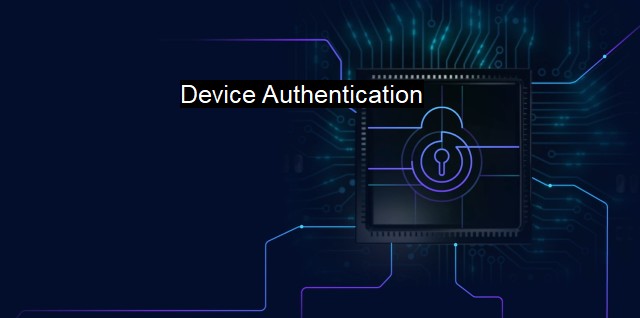What is Device Authentication?
The Importance of Device Authentication in Cybersecurity and Antivirus: Protecting Your Network from Modern Cyberattacks
Device authentication refers to the identification and verification of a device's identity to guarantee it is genuine and legitimate before it can connect to a network or system. It is a crucial aspect of cybersecurity, focusing on establishing trust in device identities. This procedure allows a device to prove its authenticity to the overarching system or network and, similarly, enables the system or network to confirm the legitimacy of the device.As our digitally connected world expands with the increasing number of Internet of Things (IoT) devices like smartphones, tablets, smart TVs, and more, so does the risk of cyber threats. Such devices are no longer just passive receivers of information. Instead, they have become active participants, sending, receiving, and processing data. In turn, systems become more vulnerable as the number of entry points or attack surface for cybercriminals increases. This heightened risk makes device authentication not just advantageous, but essential to preserving the security, functionality, and privacy of digital systems.
By authenticating devices, organizations are able to permit only authenticated devices to gain access to a network. This prevents unauthorized devices, which could be harboring malware or controlled by malicious hackers, from accessing and jeopardizing systems. Device authentication has three common methods: something the device knows, like a pre-shared key or a password; something the device has, like a secure digital certificate; and something the device is, like a specific hardware-based attribute unique to that device.
Efficient device authentication often involves the collaboration of different security techniques and tools to create a multilayered defense system against cyber threats. One of these tools is the use of antivirus software. Antivirus adds another layer of defense by scanning, detecting, and removing possible malware that may have sneaked into the system despite the device authentication procedure.
Relying solely on antivirus software can be likened to safeguarding the front door while leaving the windows unlocked. Although antivirus can prevent some level of penetration, robust cybersecurity requires devices to be authenticated, verifying their identity, and consequently protecting the entire house – the network or the system.
Trends in cyber threats show a continuous increase in the sophistication of attacks, exploiting any achievable entries into networks, including seemingly innocent devices like printers, thermostats, or even coffee machines. This makes the integration of device authentication, along with antivirus programs and other cybersecurity measures, fundamental for a comprehensive and efficient defense strategy.
Device authentication strategies also need to adapt and become more sophisticated to outpace potential cyber threats. Implementing device recognition methods, like digital fingerprinting technology, can provide this additional layer of security. In such a method, specific details about a device like IP addresses, user-agent strings, and hardware configurations are tracked. Using these unique characteristics, a device fingerprint is created, providing another means of authentication.
Device authentication in the domain of cybersecurity is vital to protecting digital systems and networks. Along with antivirus and other security measures, it forms a critical component of any cybersecurity defense strategy. Its standard methods and growing technologies aim to continually evolve and strengthen their device authentication process in order to not just detect but anticipate and suppress even the most complex cyber threats trained on infiltrating numerous interconnected devices. And within the rapidly advancing landscape of digital technology, this attribute of readiness, adaptability, and sophisticated defense makes device authentication indispensable to the realm of cybersecurity.

Device Authentication FAQs
What is device authentication in cybersecurity?
Device authentication is the process of verifying the identity of a device connecting to a network or system. This is done to prevent unauthorized access and to ensure that only trusted devices are allowed to access sensitive information.How does device authentication work in antivirus software?
In antivirus software, device authentication is typically achieved through digital certificates or unique device identifiers. When a device attempts to connect to the antivirus system, it must provide its digital certificate or identifier for verification. Only devices with valid credentials are allowed to access the antivirus system.What are the benefits of using device authentication in cybersecurity?
Device authentication helps to prevent malicious actors from accessing sensitive data or systems. It also ensures that only authorized devices are allowed to connect to a network. This can help to minimize the risk of cyberattacks and data breaches.What are some best practices for device authentication in cybersecurity?
Some best practices for device authentication include implementing strong passwords and passphrases, regularly updating and patching software, using two-factor authentication, and limiting access to sensitive data or systems to only those devices that are authorized and verified. It is also important to regularly review and update device authentication policies to ensure they are effective and up-to-date.| | A | | | B | | | C | | | D | | | E | | | F | | | G | | | H | | | I | | | J | | | K | | | L | | | M | |
| | N | | | O | | | P | | | Q | | | R | | | S | | | T | | | U | | | V | | | W | | | X | | | Y | | | Z | |
| | 1 | | | 2 | | | 3 | | | 4 | | | 7 | | | 8 | | |||||||